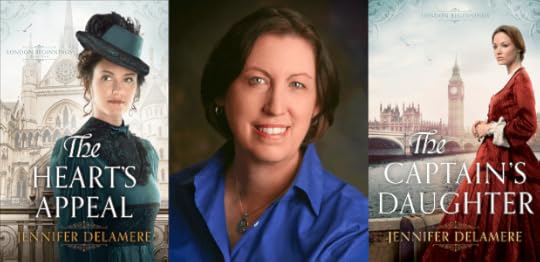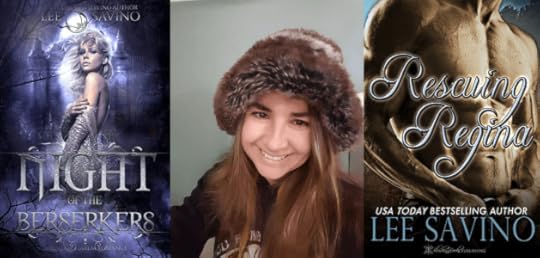Kris Spisak's Blog, page 19
June 7, 2018
Writing Tip 350: “Marinade” vs. “Marinate”

 Foodies can be a fascinating and feisty bunch. Don’t get them started on the layers of flavor in their last bite or the barm on their craft beer, and for the love of your taste buds, please don’t slip up in your usage of “marinade” vs. “marinate” when you’re sharing your own recipe (or pictures of it) with this oftentimes punctilious crowd.
Foodies can be a fascinating and feisty bunch. Don’t get them started on the layers of flavor in their last bite or the barm on their craft beer, and for the love of your taste buds, please don’t slip up in your usage of “marinade” vs. “marinate” when you’re sharing your own recipe (or pictures of it) with this oftentimes punctilious crowd.
Of course, correct word usage shouldn’t only be for the connoisseurs among us. Yes, even you with your love of peanut butter and strawberry jam sandwiches can get this spelling correct.
Remember:
“Marinate” is the verb form. This is what you do.
“Marinade” is the noun form. It’s the stuff you soak something in. (Okay, fine, that might not be the technical definition, but you get the idea.)
This is a mistake you can find across the expanses of the world wide web, and it causes almost as many cringes as a dollop of ketchup on a chimichurri burger. Before you look up what that chimichurri is—hint, it’s fun to say, spell, and eat—make sure you let this “marinade” vs. “marinate” difference marinate in your mind. Let it soak in. Got it?
Okay, feel free to go look up recipes.
Foodie writing tip # 350.1: While we’re on the subject of pet-peeves of a gourmand, it’s probably worth mentioning that while “refrigerator” can be shortened to “fridge,” it is not spelled, “refridgerator.” Phew, I’m glad that’s off my chest. Or should I say my stomach?
Join 675+ subscribers and sign-up for my writing and editing email newsletter for more tips like this.
The post Writing Tip 350: “Marinade” vs. “Marinate” appeared first on Kris Spisak.
May 24, 2018
Writing Tip 349: “Envelop” vs “Envelope”

 If I were you, I’d be a bit cautious if someone wanted to envelope you in their arms. Does this mean they’re going to put you into a giant package and ship you off somewhere? Or perhaps this is just a typo. I’m guessing it’s a typo. But it’s typos like this that always give me pause. You can do better, folks.
If I were you, I’d be a bit cautious if someone wanted to envelope you in their arms. Does this mean they’re going to put you into a giant package and ship you off somewhere? Or perhaps this is just a typo. I’m guessing it’s a typo. But it’s typos like this that always give me pause. You can do better, folks.
Let’s consider that final “e.” Remember:
“Envelop” is a verb, meaning to enfold or enclose completely.
“Envelope” is a noun, referring to the folded paper container that can contain a letter.
The difference here is not only in the spelling but also in the pronunciation. If the stress is on the first part of the word, “EN-velope,” we’re talking about the noun form. If the stress is on the second syllable, “en-VEL-op,” we’re talking about the verb form.
Both words come from the same root, the Old French word envoleper, meaning to cover, fold, or wrap up; both have to do with surrounding something by something else. But they just aren’t the same word, and they cannot be used interchangeably.
Don’t push the envelope with your spelling choices. There’s being a rebel, and then there’s just causing confusion. Confusion should be avoided at all costs.
Join 675+ subscribers and sign-up for my writing and editing email newsletter for more tips like this.
The post Writing Tip 349: “Envelop” vs “Envelope” appeared first on Kris Spisak.
May 11, 2018
Authors on Editing: Interview with Jennifer Delamere
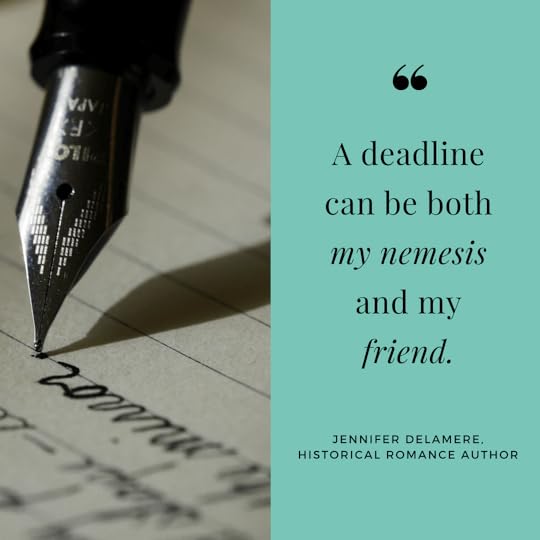
What is a question that can bring a novelist to hysterical laughter? What is sometimes a writer’s nemesis and sometimes a friend? The following interview with historical romance novelist and editor Jennifer Delamere provides the answers.
I met Jennifer at one of my Grammartopia events last fall in Durham, North Carolina, where she didn’t just compete, but her grammar prowess won the day. I admired her work before that time, of course, but getting to banter with her about the plural of mongoose and Oxford commas made me realize I’d found a kindred editorial spirit. Enjoy this interview, writers. There are a lot of great nuggets inside.
Jennifer Delamere writes tales of the past…and new beginnings. Her Victorian-set novels have won many accolades, including finalist for the Romance Writers of America RITA® award, a starred review from Publishers Weekly, and the Georgia Romance Writers Maggie Award for Excellence. Jennifer earned a B.A. in English from McGill University in Montreal, Canada, where she became fluent in French and developed an abiding passion for winter sports. She’s been an editor of nonfiction and educational materials for over two decades. She loves reading classics and histories, which she mines for the vivid details to bring to life the people and places in her books.
Q & A with Historical Romance Author Jennifer Delamere
Kris: I love talking writing and editing with wordsmiths of all kinds, but I have to say that I love chatting with writers who also wear an editorial hat. There’s often an extra layer of depth to the conversation. So to begin, what is your favorite part of the writing process?
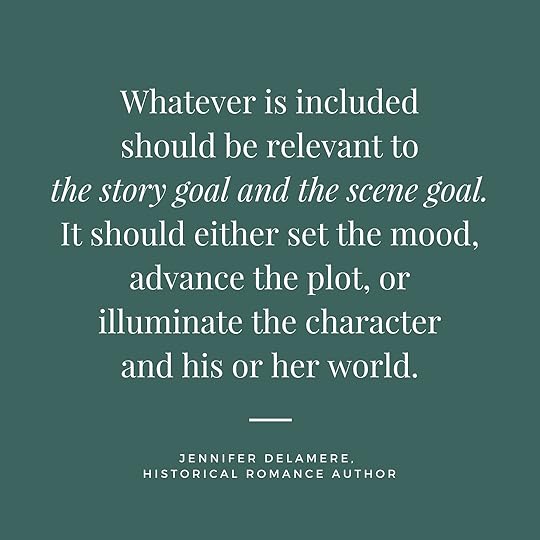 Jennifer: I do love the research. I love reading history books and scanning digitized newspapers from the era of my books and getting obscure research works via interlibrary loan. I can happily go down any number of rabbit holes. After that, the best part of writing the book is the editing stage. Writing the initial draft, figuring out the plot and scene breakdowns, is very hard for me. But once I have the draft written and I know I have a complete story, that’s when the fun of revising and shaping it can begin: making a word or phrase better, adding or deleting a scene to make the story stronger. It gives me great satisfaction to see the final product coming together.
Jennifer: I do love the research. I love reading history books and scanning digitized newspapers from the era of my books and getting obscure research works via interlibrary loan. I can happily go down any number of rabbit holes. After that, the best part of writing the book is the editing stage. Writing the initial draft, figuring out the plot and scene breakdowns, is very hard for me. But once I have the draft written and I know I have a complete story, that’s when the fun of revising and shaping it can begin: making a word or phrase better, adding or deleting a scene to make the story stronger. It gives me great satisfaction to see the final product coming together.
Kris: Jennifer, you’re my kind of writer. The editing stage is when you have all of your clay on the table and now you get to form it into exactly the shape and style of a finished piece of art. Do you edit as you write or do you plow forward at full steam, letting words and punctuation fall where they may?
Jennifer: I tend to edit as I go. The upside is that my first draft is pretty clean. The downside is that I may spend hours or even days smoothing out a passage or scene that might get cut in the final draft, or even as I complete the first draft and discover I need to go in a different direction. That’s a problem, because time is precious—especially when one is on a deadline and has a day job, too. My goal for every book has been to keep that “inner editor” at bay and concentrate on getting the story out. One day I might actually accomplish it!
Kris: I can absolutely relate to that. Now, when writing about history, there’s a fine line between capturing a different time period and “data-dumping” fascinating but sometimes irrelevant information. How do you know what to include or when something should be cut?
Jennifer: Whatever is included should be relevant to the story goal and the scene goal. It should either set the mood, advance the plot, or illuminate the character and his or her world. If you can do all those things at once, even better. Some fabulous bit of information won’t interest the reader if it doesn’t tie in directly to what is happening or make the action more interesting. At times, I have worked to find a connection so that I could include some wonderful nugget. I hope in those cases I was successful.
Kris: I like that idea of focusing on the story goal and the scene goal. That puts a tangible measure of value in the writer’s hands. Talking about digging deep in a relevant way, how does a writer know that they are going beyond capturing the details of a room but capturing its atmosphere, adding a layer of depth to a story?

Jennifer: The “atmosphere” of a room is how it affects your viewpoint character. For example, in The Heart’s Appeal, Julia enters a home that is stuffed with fine paintings, furniture, and other objects. The owner of the home (a character whose viewpoint we are never in) is undoubtedly proud of this display of wealth and “good taste.” But for Julia, it only feels claustrophobic and overbearing. She can’t imagine any need to have so much stuff. Her reaction tells you as much about her as about the room. Also, even though the room is filled with many things, she focuses on the one item that holds personal interest for her. (I’ll let you read the book to discover what that is.) Michael, the book’s hero, secretly feels the same way as Julia does about this house—even though it belongs to his sister and brother-in-law. So the reader sees this bond between these two otherwise very different people, even if they themselves don’t know it immediately.
Kris: And only a writer who loves language can sell a book by talking about its editorial process. Bravo. But before I send my readers off to buy your books, let’s talk structure. There is a formula to writing romance, but nothing, of course, should feel formulaic. What do you strive to do with your characters and their relationships to hook your reader with emotional intensity?
Jennifer: My goals in this regard are fairly simple. First, I want to find out why these two people should be together—what makes them truly unique, both individually and as a couple. Just as no two people are alike, neither is any couple. Why should they be together, other than because I, the writer, want them to be? I often think of that corny line from the movie Jerry Maguire: “You complete me.” I must ask myself, and prove to the reader, why that is true for this particular couple. Second, with any kind of genre fiction, there are certain reader expectations that the writer must both meet and (to be very good) transcend. In romance, one element is the HEA, or “happily ever after.” The reader expects this. But in a really good story, you make the reader believe that this is the ONE time when the obstacles are so big that there is no way the hero and heroine will be able to get together! Then, overcoming those obstacles to get to the HEA makes the story so much more satisfying.
Kris: Satisfying for the reader and satisfying for the writer too, for sure. Let’s talk about the nitty-gritty: are there any words you know you overuse or other writing weaknesses of your own that you always pay special attention to in your final editing stages?
Jennifer: I have a list of such words, but I won’t share them publicly! My hope is that the reader is never pulled out of my story by stumbling across over-used words or other weaknesses in the writing. In the final stages, I comb through my manuscript carefully, on the lookout for those problems.
Kris: How do you know your editing process is finished and the story you’re working on is officially “done”?
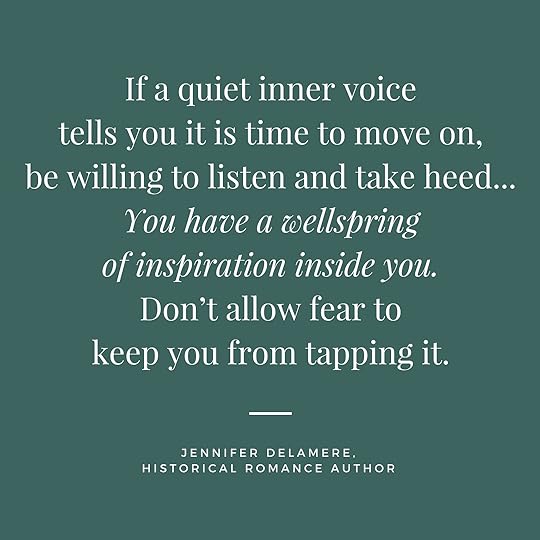 Jennifer: [Insert hysterical laughter here.] I am never done. Which is to say, I am done when the editor pries it from my grasping hands. I once read a film director’s comment (sorry, I can’t remember who it was), that he never finished a film; he finally just had to abandon it. I understand completely what he meant. I do reach a point where I am happy with the result, but I could always go back and find something that I might have changed if it were possible to do it again. For this reason, a deadline can be both my nemesis and my friend.
Jennifer: [Insert hysterical laughter here.] I am never done. Which is to say, I am done when the editor pries it from my grasping hands. I once read a film director’s comment (sorry, I can’t remember who it was), that he never finished a film; he finally just had to abandon it. I understand completely what he meant. I do reach a point where I am happy with the result, but I could always go back and find something that I might have changed if it were possible to do it again. For this reason, a deadline can be both my nemesis and my friend.
But I’d also like to give a word of advice to unpublished authors out there: don’t spend forever polishing and re-polishing your work. Some beginning writers can use the long editing process as a crutch. Try to be aware if you have taken a work as far as you can. If a quiet inner voice tells you it is time to move on, be willing to listen and take heed. Be brave enough to strike out with something new. You will learn many new things, including perhaps something that will help you with your previous work. Believe that you have a wellspring of inspiration inside you. Don’t allow fear to keep you from tapping it.
And isn’t it by tapping that creative wellspring that we as writers find our happily ever after?
This editing business is hard. It takes persistence, dedication, and a thick skin. But when we endure, great things happen. Your story can shine through amidst all the rubble of early drafts. And then, your story will find its readers.
Thank you so much, Jennifer Delamere for your time, wisdom, and inspiration, and happy writing, folks!
Join 675+ subscribers and sign-up for my monthly email newsletter for more interviews like this.
The post Authors on Editing: Interview with Jennifer Delamere appeared first on Kris Spisak.
May 9, 2018
Writing Tip 348: “Alumnus,” “Alumna,” “Alumnae” & “Alumni”

 Nothing makes you feel less like a graduate than failing your first real-world spelling test. Do you know the difference between “alumnus,” “alumna,” “alumnae” & “alumni”?
Nothing makes you feel less like a graduate than failing your first real-world spelling test. Do you know the difference between “alumnus,” “alumna,” “alumnae” & “alumni”?
When people start talking Latin origins and uncommon spelling forms, tension begins to build in some secret place where childhood spelling bee angst hides. When we start adding word gender form into the conversation, there’s a tendency for hands to be tossed into the air. But sometimes, there are moments for tossing up graduation caps rather than hands. And in these cases, you need to make sure you’re prepared.
Some might cheat and use the shortened forms “alum” or “alums,” but you, savvy graduate, can do better.
Remember:
A “alumnus” is a male graduate.
An “alumna” is a female graduate.
“Alumnae” are multiple female graduates.
“Alumni” are multiple male graduates or graduates of both sexes.
If you’re a graduate, own it. Strut across that stage. Hold your head up high. You’ve earned it. You’ve rocked it. Just make sure you spell your new title right. Got it?
Join 675+ subscribers and sign-up for my writing and editing email newsletter for more tips like this.
The post Writing Tip 348: “Alumnus,” “Alumna,” “Alumnae” & “Alumni” appeared first on Kris Spisak.
May 3, 2018
Writing Tip 347: “Stocking” vs. “Stalking”


Is it beautiful? Sure. At least until there’s confusion over whether we’re talking about stalks, stalking, or investment opportunities.
Being someone who stocks things is good. Being someone who stocks or stalks people is bad. Being someone who stalks things could go either way—but I’m guessing there has to be a story there.
We can talk about corn stalks or agricultural stocks on the New York Stock Exchange. We can talk about stockings made of silk or a stalking horse, but whichever form you intend, make sure you’re spelling it right. Neither farmers, not investors do well when they’re careless.
Remember:
“Stocking,” as a verb, can mean to keep a bunch of something (like wood in the wintertime) or to supply (like a grocer filling the shelves), among other definitions.
“Stalking,” as a verb, can mean to pursue obsessively, to walk stiffly, or to move forward stealthily. (Meanwhile isn’t “stealthily” just a fun word to say. It doesn’t roll off the tongue at all. I just made you say it out loud, didn’t I?)
And while making things clear:
A “stalk” can refer to the main supporting stem of a plant, a non-plant related support, or the act of the “stalking” movement discussed above.
A “stock” can refer to a supply or inventory, funds invested or available for investment or trading, a liquid base for a soup or gravy, and a surprising number of other things.
Of course, there is a difference between stocking up and hoarding (or hoarding hordes? Yikes!), but that’s for another conversation. Well, actually, it’s in Get a Grip on Your Grammar if you really want to know.
Do you ever catch yourself pausing over the correct spelling of something? Maybe you need to take stock of the situation. (Ooh, did you know that correct spelling?) We all do from time to time. If you have a suggestion for a future writing tip, please let me know! Contact me today.
Join 675+ subscribers and sign-up for my writing and editing email newsletter for more tips like this.
The post Writing Tip 347: “Stocking” vs. “Stalking” appeared first on Kris Spisak.
April 26, 2018
Writing Tip 346: “Gamble” vs. “Gambol”


If someone is gamboling while gambling, either the bartender should cut them off or, maybe, they’re having a really lucky muppet-arms and how-do-you-like-them-apples kind of day.
Sometimes pressing send on an important communication can feel like a gamble. When you misspell a word that spellcheck doesn’t catch—like applying to be a “manger” rather than a “manager” (ouch!)—it can really hurt the cause. Typos can sometimes sneak into our writing when you aren’t looking (or when you forget to proof yourself), and here’s one more you need to make sure to get right to make those big emails slightly less of a “gamble,” “gambol,” or otherwise.
If you’re walking into a Vegas hotel, maybe you’re getting ready to gamble. If you’re gamboling through the door of that hotel, that’s something quite different.
The latter form isn’t something spellcheck will help you with. Plus, it’s a fun word to know.
Remember:
To “gamble” is to do something risky or to make a bet, usually involving money.
To “gambol” is to playfully skip or frolic.
When people spell words correctly in their important communications and then great things happen because of it, gambles can pay off. And that’s the instance when you are totally allowed to gambol around your office, your home, or a field full of flowers.
See the difference?
Writing Tip 346.1: In the United States, the proper spelling is “gamboling” and “gamboled”; however, pretty much everywhere else, the proper spelling is “gambolling” and “gambolled.” There we go being grammatically rebellious again.
Happy writing (and gambling? and gamboling?), folks!
Join 650+ subscribers and sign-up for my writing and editing email newsletter for more tips like this.
The post Writing Tip 346: “Gamble” vs. “Gambol” appeared first on Kris Spisak.
April 16, 2018
Trivia: The Origin of “Turning the Tables”

There aren’t many expressions that have their origins in board games, but “to turn the tables” on someone—meaning to change someone’s fortunes—comes from exactly that source.

Unless you’re Bugs Bunny or playing someone who really isn’t paying attention, when it comes to literally turning the table or the board to switch positions with your opponent, this strategy won’t work; however the concept of “turning the tables” has been around since the 17th century according to the OED.
Popular 17th century board games included:
Chess
Backgammon
Draughts (Checkers)
Fox and Geese
How often people successfully turned the tables with these games, I have no idea.
Gaming trivia is almost as fascinating as language trivia, actually. Did you know that people have been playing board games for at least 5,000 years? Ancient boards, dice, and counters have been found in Sumer (Iraq) that date back to roughly 3,000 B.C.E. The oldest known complete game ever found is known as The Royal Game of Ur.
There are no dice or tables to turn when it comes to Grammartopia, but it’s good to be a part of the social gaming tradition. As for you, next time you’re sitting down to a friendly board game, you’ll now have some trivia to share.
Happy gaming (and writing), folks!
Join 650+ subscribers and sign-up for my writing and editing email newsletter for more language trivia like this.
The post Trivia: The Origin of “Turning the Tables” appeared first on Kris Spisak.
April 13, 2018
Share Your Best Writing Advice & Win a Book
Get a Grip on Your Grammar: 250 Writing and Editing Reminders for the Curious or Confused is turning one year old this week! Time flies when you’re having fun and scribbling up a storm. To celebrate, I’m giving away three copies of Get a Grip to whoever shares the best answers to the following question:
What is the best writing tip you’ve ever received or that you wish you’d been told?
Contest Rules:
Keep your answers 3 sentences or fewer.
Be funny. Be honest. Be sincere. Be however you’d like to be. But share your best wisdom.
One entry per person (i.e., a single individual can only win one book.)
All entrants will receive Kris’s “25 Fiction Writing Redundancies” AND “25 Business Writing Redundancies,” as well as access to Kris’s monthly writing tips newsletter.
The best 3 pieces of advice, as chosen by Kris, will be announced by noon on April 25, 2018. The 3 winners will be notified via email and will each receive a copy of Get a Grip on Your Grammar .
#mc_embed_signup{background:#fff; clear:left; font:14px Helvetica,Arial,sans-serif; }
Enter Here:
* indicates required
What is your best writing advice? *
Email Address *
First Name *
Last Name
Twitter handle
Sharing Permissions
I agree to allow Kris Spisak to share my tip via social media.
I agree to allow Kris Spisak to share my tip via social media, including my name and/or Twitter handle.
The post Share Your Best Writing Advice & Win a Book appeared first on Kris Spisak.
Authors on Editing: Interview with Lee Savino
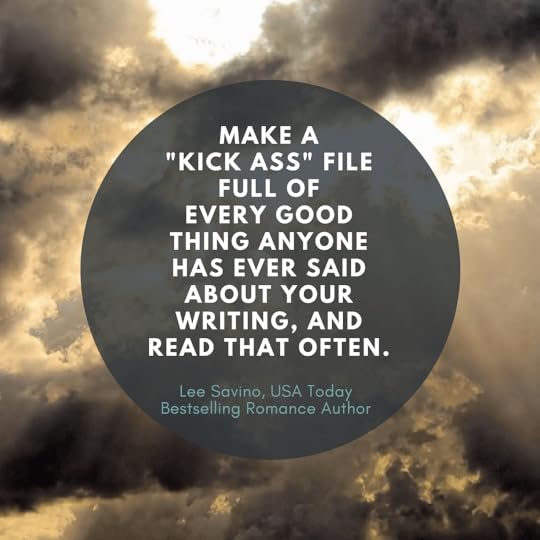
Some writers take years upon years for a single project, and some writers produce a library in just a few rotations around the sun. Lee Savino falls into the latter category. She released seven books in 2017 and expects to release about ten novels in 2018, not to mention a few novellas.
Successful writers like this amaze me, not just for their impressive output but in their editing processes as well. All writers know that editing is an essential piece of the publishing process, but when you’re publishing so frequently, efficiency is essential.
How does she do it? The following Authors on Editing interview was set up just so I could find out!
As for Lee’s bio, I’m going to go ahead and quote her directly:
“Raised by wizards on the glorious peaks of Mount Kilimanjaro, Lee grew up sword fighting shadows and befriending sherpas until she flew to the Ivory Coast to study sharkfighting.
She writes fiction full time.
After graduating Hollins University with a degree in creative writing, her first manuscript won the Hollins Fiction Prize. She’s now published over fifteen books and coaches writers to help them become full time authors. Visit http://leesavino.com/author-advice/ to sign up for her fabulous and fun author advice.
The End”
Q & A with USA Today Bestselling Author of “Smexy Romance” Lee Savino
Kris: What does the word “editing” mean to you?
Lee: I think of editing in several stages or levels. One is very high level—plot and structure, nailing genre/subgenre conventions and character arc. I use beta readers and my own studies of story craft (or, in rare cases, a developmental editor) to build that architecture. Content and copy-editing come next, right before the final proof or polish. I hire people for those editing passes. In the very early stages of a book, I go back and “play” with what I’ve written. It’s editing on a cellular level. I love wordcraft soooo much; it’s play to me!
Kris: Now when you talk about these different stages, especially the first concerning plot, structure, character, and genre conventions, do you edit as you write, only after you finish, or a little bit of both?
Lee: A little bit of both. I usually get stuck around 60-80% of the way through a book, so I go back and prettify everything I have up to that point. Turning the first half of the book into a solid, polished draft gives me a feeling of accomplishment that allows me to push through the rest of the book.
Kris: Prettify. Nice. Everything needs to be prettified sometimes, doesn’t it? And we do need to look for those small wins to keep us motivated. What is your favorite part of the revision process?
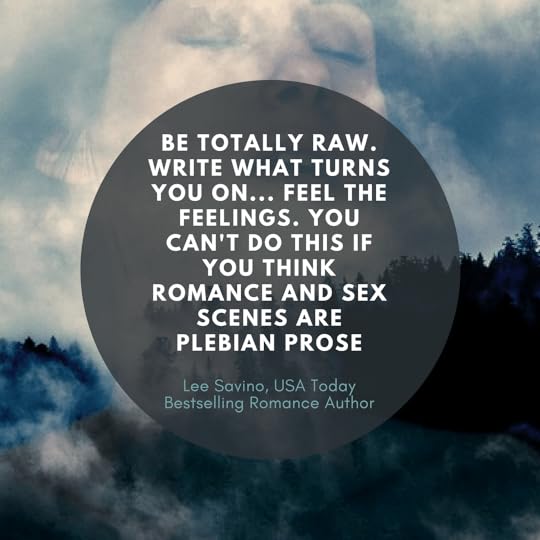 Lee: Playing with the words.
Lee: Playing with the words.
Kris: You have my heart with that one. What is your least favorite part of the editing process?
Lee: Working through my editor’s comments. I usually just “accept all changes” and do the least amount of work possible to address her concerns. Sad, but true.
Kris: Right, editors can hand a lot of commentary back to writers, suggested tweaks of everything from punctuation to word choice, from recommending reworkings of ideas to cutting entire scenes. With an editor you trust and the deadlines you give yourself, I understand that decision. Now, turning from grammar to sex…perhaps my favorite transition ever (one that might need some editing, perhaps, but let’s just let the irony of that be)… sexual tension is a specialty of yours in your writing. How do you edit scenes to tap into that emotional angst?
Lee: Heh. My word count per hour skyrockets when I write sex scenes—so I write a lot of them! I get very in the zone. One of the biggest things about writing romance, and genre fiction in general, is you have to unplug from all the bad habits you picked up in a traditional degree or MFA program. Be totally raw. Write what turns you on, what you love in romance and what you know readers will love. Don’t hold back. Tap into your own fantasies. Put plenty of dialogue in the sex scene description and always be thinking of the emotional character arc and how the intimacy of sex blows the relationship between these two (or more) people wide open. Feel the feelings. You can’t do this if you think romance and sex scenes are plebian prose—or if you do, you have to just let go and wallow in it. Don’t try to impress your lit professors. Fuck your lit professors. They don’t publish anything anyone reads anyway. Harsh but true.
Kris: Harsh indeed, but as with everything when it comes to writing, to each their own. It’s all about finding that path that works for you, your genre, and your goals. There’s no one way to do this. Do you have any advice for writers on how to writing bravely, tapping into your their emotions and vulnerabilities?
Lee: Read everything, but most of all read what you love to read and write what you love to read. If you don’t love it, don’t write it. Don’t write to impress your lit professors, your mom, your dog, or your fucking creative writing group full of unpublished poets. Unless you want to be an unpublished poet. Don’t read one-star reviews. Don’t read critics reviews. Do read all the time. Read good books. Read bad books and think “I can do better.” Find writers/readers in your genre and subgenre and have THEM give you feedback. Have a nice person hold your hand for your first few scenes and manuscript. Make a “Kick ass” file full of every good thing anyone has ever said about your writing, and read that often. And keep writing and reading what you love.
 Kris: You’re brutal. And blunt. And in this conversation alone I can absolutely see where your following has come from. Okay, let’s keep going. How do you ensure that your characters are alive on the page? Is there anything you keep an eye on in your later writing stages to ensure everyone is as real and fleshed out as they can be?
Kris: You’re brutal. And blunt. And in this conversation alone I can absolutely see where your following has come from. Okay, let’s keep going. How do you ensure that your characters are alive on the page? Is there anything you keep an eye on in your later writing stages to ensure everyone is as real and fleshed out as they can be?
Lee: I follow a lot of screenwriters’ ideas on craft. I make sure my characters have an inner emotional arc. Even better is if it taps into something I’m learning—my own emotional arc in real life.
Kris: That’s great advice, writing what you know on an emotional level. Here’s my last question for you: how do you know when you are done?
Lee: You’re never done. If you wrote the book for the rest of your life, you could always make it better. Get stuck; get a beta reader or two. Take their advice; push through to the end; then pass it off to editors. And move on. You have new stories to write!
Okay, so I’ll fully admit that I am the opposite of Lee in most of my own projects. I’ve spent years tweaking my scenes, finding my characters, and cajoling my language, but there’s something so liberating about thinking of story like she does. We all do have so many stories to tell. If we delay too much, we’ll never have a chance to tell them all. That’s an intriguing thought.
Of course, no matter what you write, no matter your process or how fast you write it, keep at it, writers. There is something so true about a well-told story. I can’t wait to hear about yours.
Thank you for your time, Lee Savino, and happy writing, folks!
Join 650+ subscribers and sign-up for my monthly email newsletter for more interviews like this.
The post Authors on Editing: Interview with Lee Savino appeared first on Kris Spisak.
Authors on Editing: Interview with Lee Salvino
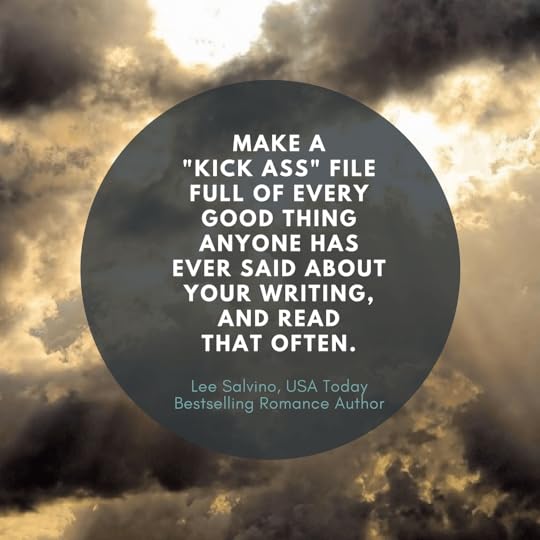
Some writers take years upon years for a single project, and some writers produce a library in just a few rotations around the sun. Lee Savino falls into the latter category. She released seven books in 2017 and expects to release about ten novels in 2018, not to mention a few novellas.
Successful writers like this amaze me, not just for their impressive output but in their editing processes as well. All writers know that editing is an essential piece of the publishing process, but when you’re publishing so frequently, efficiency is essential.
How does she do it? The following Authors on Editing interview was set up just so I could find out!
As for Lee’s bio, I’m going to go ahead and quote her directly:
“Raised by wizards on the glorious peaks of Mount Kilimanjaro, Lee grew up sword fighting shadows and befriending sherpas until she flew to the Ivory Coast to study sharkfighting.
She writes fiction full time.
After graduating Hollins University with a degree in creative writing, her first manuscript won the Hollins Fiction Prize. She’s now published over fifteen books and coaches writers to help them become full time authors. Visit http://leesavino.com/author-advice/ to sign up for her fabulous and fun author advice.
The End”
Q & A with USA Today Bestselling Author of “Smexy Romance” Lee Salvino
Kris: What does the word “editing” mean to you?
Lee: I think of editing in several stages or levels. One is very high level—plot and structure, nailing genre/subgenre conventions and character arc. I use beta readers and my own studies of story craft (or, in rare cases, a developmental editor) to build that architecture. Content and copy-editing come next, right before the final proof or polish. I hire people for those editing passes. In the very early stages of a book, I go back and “play” with what I’ve written. It’s editing on a cellular level. I love wordcraft soooo much; it’s play to me!
Kris: Now when you talk about these different stages, especially the first concerning plot, structure, character, and genre conventions, do you edit as you write, only after you finish, or a little bit of both?
Lee: A little bit of both. I usually get stuck around 60-80% of the way through a book, so I go back and prettify everything I have up to that point. Turning the first half of the book into a solid, polished draft gives me a feeling of accomplishment that allows me to push through the rest of the book.
Kris: Prettify. Nice. Everything needs to be prettified sometimes, doesn’t it? And we do need to look for those small wins to keep us motivated. What is your favorite part of the revision process?
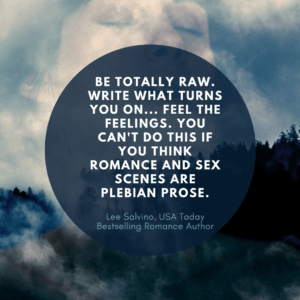
Lee: Playing with the words.
Kris: You have my heart with that one. What is your least favorite part of the editing process?
Lee: Working through my editor’s comments. I usually just “accept all changes” and do the least amount of work possible to address her concerns. Sad, but true.
Kris: Right, editors can hand a lot of commentary back to writers, suggested tweaks of everything from punctuation to word choice, from recommending reworkings of ideas to cutting entire scenes. With an editor you trust and the deadlines you give yourself, I understand that decision. Now, turning from grammar to sex…perhaps my favorite transition ever (one that might need some editing, perhaps, but let’s just let the irony of that be)… sexual tension is a specialty of yours in your writing. How do you edit scenes to tap into that emotional angst?
Lee: Heh. My word count per hour skyrockets when I write sex scenes—so I write a lot of them! I get very in the zone. One of the biggest things about writing romance, and genre fiction in general, is you have to unplug from all the bad habits you picked up in a traditional degree or MFA program. Be totally raw. Write what turns you on, what you love in romance and what you know readers will love. Don’t hold back. Tap into your own fantasies. Put plenty of dialogue in the sex scene description and always be thinking of the emotional character arc and how the intimacy of sex blows the relationship between these two (or more) people wide open. Feel the feelings. You can’t do this if you think romance and sex scenes are plebian prose—or if you do, you have to just let go and wallow in it. Don’t try to impress your lit professors. Fuck your lit professors. They don’t publish anything anyone reads anyway. Harsh but true.
Kris: Harsh indeed, but as with everything when it comes to writing, to each their own. It’s all about finding that path that works for you, your genre, and your goals. There’s no one way to do this. Do you have any advice for writers on how to writing bravely, tapping into your their emotions and vulnerabilities?
Lee: Read everything, but most of all read what you love to read and write what you love to read. If you don’t love it, don’t write it. Don’t write to impress your lit professors, your mom, your dog, or your fucking creative writing group full of unpublished poets. Unless you want to be an unpublished poet. Don’t read one-star reviews. Don’t read critics reviews. Do read all the time. Read good books. Read bad books and think “I can do better.” Find writers/readers in your genre and subgenre and have THEM give you feedback. Have a nice person hold your hand for your first few scenes and manuscript. Make a “Kick ass” file full of every good thing anyone has ever said about your writing, and read that often. And keep writing and reading what you love.
 Kris: You’re brutal. And blunt. And in this conversation alone I can absolutely see where your following has come from. Okay, let’s keep going. How do you ensure that your characters are alive on the page? Is there anything you keep an eye on in your later writing stages to ensure everyone is as real and fleshed out as they can be?
Kris: You’re brutal. And blunt. And in this conversation alone I can absolutely see where your following has come from. Okay, let’s keep going. How do you ensure that your characters are alive on the page? Is there anything you keep an eye on in your later writing stages to ensure everyone is as real and fleshed out as they can be?
Lee: I follow a lot of screenwriters’ ideas on craft. I make sure my characters have an inner emotional arc. Even better is if it taps into something I’m learning—my own emotional arc in real life.
Kris: That’s great advice, writing what you know on an emotional level. Here’s my last question for you: how do you know when you are done?
Lee: You’re never done. If you wrote the book for the rest of your life, you could always make it better. Get stuck; get a beta reader or two. Take their advice; push through to the end; then pass it off to editors. And move on. You have new stories to write!
Okay, so I’ll fully admit that I am the opposite of Lee in most of my own projects. I’ve spent years tweaking my scenes, finding my characters, and cajoling my language, but there’s something so liberating about thinking of story like she does. We all do have so many stories to tell. If we delay too much, we’ll never have a chance to tell them all. That’s an intriguing thought.
Of course, no matter what you write, no matter your process or how fast you write it, keep at it, writers. There is something so true about a well-told story. I can’t wait to hear about yours.
Thank you for your time, Lee Salvino, and happy writing, folks!
Join 650+ subscribers and sign-up for my monthly email newsletter for more interviews like this.
The post Authors on Editing: Interview with Lee Salvino appeared first on Kris Spisak.

